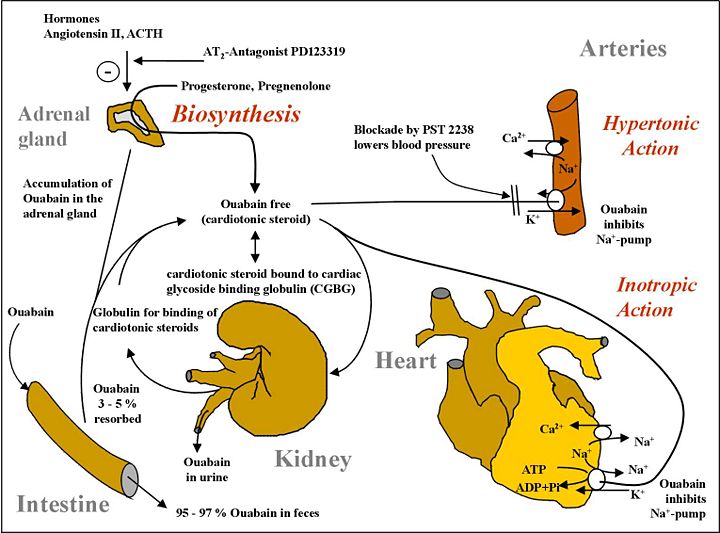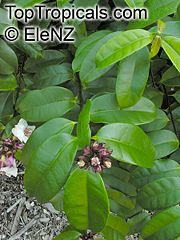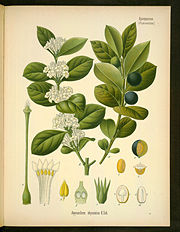Ouabain
From Proteopedia
| Line 1: | Line 1: | ||
| - | <StructureSection load='3n23' size='500' side='right' caption='Na+/K+ ATPase-Ouabain Binding, ([[3n23]])' scene='Sandbox_60/Ouabain_3d/1'> | ||
[[Ouabain]] is a cardiac glycoside that inhibits ATP-dependent sodium-potassium exchange across cell membranes. The binding of ouabain to the sodium-potassium pump (also called Na+/K+ ATPase) prevents the conformational changes necessary for its proper function. This affects intracellular ion composition in various ways with various effects, depending on the cell and the dosage. The compound has therefore been utilized in medicine, both as a drug and in research related to active membrane transport. | [[Ouabain]] is a cardiac glycoside that inhibits ATP-dependent sodium-potassium exchange across cell membranes. The binding of ouabain to the sodium-potassium pump (also called Na+/K+ ATPase) prevents the conformational changes necessary for its proper function. This affects intracellular ion composition in various ways with various effects, depending on the cell and the dosage. The compound has therefore been utilized in medicine, both as a drug and in research related to active membrane transport. | ||
| + | <StructureSection load='3n23' size='500' side='right' caption='Na+/K+ ATPase-Ouabain Binding, ([[3n23]])' scene='Sandbox_60/Ouabain_3d/1'> | ||
==Target Protein: Na+/K+ ATPase== | ==Target Protein: Na+/K+ ATPase== | ||
[[Image:498px-Scheme sodium-potassium pump-en-2.svg.png|thumb|right|upright=3.0]] | [[Image:498px-Scheme sodium-potassium pump-en-2.svg.png|thumb|right|upright=3.0]] | ||
Revision as of 20:40, 15 August 2011
Ouabain is a cardiac glycoside that inhibits ATP-dependent sodium-potassium exchange across cell membranes. The binding of ouabain to the sodium-potassium pump (also called Na+/K+ ATPase) prevents the conformational changes necessary for its proper function. This affects intracellular ion composition in various ways with various effects, depending on the cell and the dosage. The compound has therefore been utilized in medicine, both as a drug and in research related to active membrane transport.
| |||||||||||
Sources
It was recently discovered that ouabain, long thought to be exclusively a plant product, is actually synthesized by animals, and secreted from the adrenal cortex to regulate body osmosis and cellular concentrations of sodium. The image below represents its biosynthesis and metabolism in humans.
Though there are currently synthetic schemes for the production of Ouabain, the compound is usually extracted from the plant sources Strophanthus gratus (left) and Acokanthera schimperi. Somalia is both the native habitat of these plants and the etymological origin of the name ouabain. Somalian tribes have historically used ouabain poisoned arrows for hunting. These arrows are capable of killing a hippopotamus, likely due to cardiac arrest.







